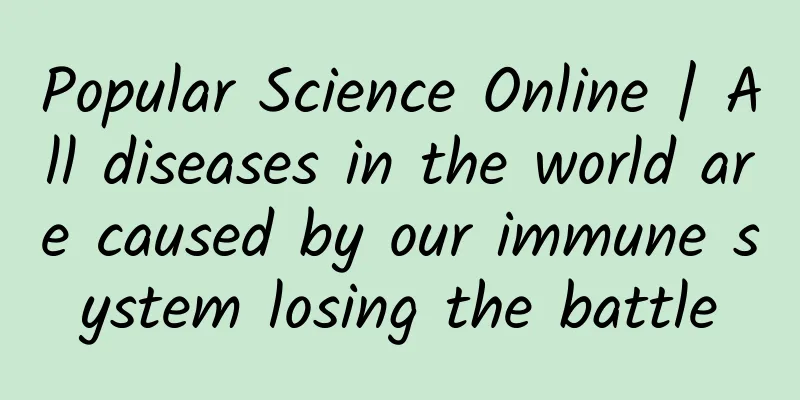This private part of your body needs to be touched frequently, be careful of the sensation that may indicate cancer!

|
During physical examinations, many female friends will hear the doctor say: You have a lump in your chest, it is breast hyperplasia/nodule. Some girls feel chest pain before their period comes, and feel lumps when they touch it carefully. At these times, I can't help but feel a little uneasy: Could the lump in my breast be breast cancer? Is there any way to identify breast cancer in daily life? Let’s talk about breast lumps. I often hear different female friends say that they have nodules, hyperplasia, fibromas, and cysts in their breasts. So what are the differences behind these different names? Breast nodules It is the common name for breast tumors, most of which are benign, while breast cancer is a malignant tumor. Nodules can also be divided into breast fibroadenomas, intraductal papilloma, breast lipoma, etc. The most common is breast fibroadenomas. 👉The lumps of fibroadenomas are mostly round or oval, with smooth surfaces, clear boundaries, can be pushed, and have a tough texture; 👉Normally not accompanied by breast pain, or only mild breast discomfort; 👉The size of breast lumps does not change with the menstrual cycle. 👉The most common age is under 30 years old, and the most common age is 20 to 25 years old. Breast hyperplasia The cyclical symptoms of breast swelling and pain before menstruation and pain reduction or disappearance after menstruation are the main symptoms of breast hyperplasia. However, some severe patients have persistent pain before and after menstruation. 👉The shape of the lumps varies in size, and they may be oblate or irregular; 👉It is harder before menstruation and softer after menstruation; 👉The boundaries are not clear either, they can be pushed. 👉The most common age group is middle-aged and young people. Breast cysts There are simple cysts (also known as cystic breast hyperplasia) and milk cysts (caused by milk retention during lactation), and simple cysts are the most common. 👉The lumps are mostly round or oval, cystic masses filled with fluid; 👉The edges are clear and the surface is smooth. It can be single or multiple. Generally, there are no obvious symptoms. 👉The most common age is 35~50 years old. Breast cysts, hyperplasia, and nodules are all benign and require regular checkups. However, breast cancer, as a malignant tumor, has surpassed lung cancer in global incidence, becoming the most common cancer and the leading new cancer in Chinese women. According to data released by the World Health Organization's International Agency for Research on Cancer (IARC) in 2020: There were 2.09 million new cases of cancer in Chinese women, including 420,000 cases of breast cancer, with an incidence rate far exceeding that of other cancers; there were 120,000 deaths, ranking fourth. Therefore, we need to pay attention to all clues that may indicate breast cancer and try to detect it early! It is recommended that you take 2 minutes after each shower to carefully examine your breasts. If you have the following symptoms, you should go to the hospital for examination. Abnormal breast lumps Breast cancer lumps vary in shape and may be round, oval or irregular. The key point is that they are hard in texture, which can be compared to the hardness of the chin. They are difficult to push and easily adhere to the skin and surrounding tissues. In addition, the lump has nothing to do with the menstrual cycle or mood changes, and can grow rapidly in a short period of time. It also rarely causes breast pain, so don't ignore it just because it doesn't hurt or itch. Abnormal changes in the nipple 👉Nipple discharge. If you are not breastfeeding and bright red, coffee-colored, light yellow, brown, etc. liquid discharges from your breasts or nipples when you gently squeeze them, you should be alert to the possibility of breast cancer. Even if your skin color does not belong to the above colors, you may have mastitis, intraductal papilloma or other diseases. It is best to go to the hospital for a check-up. 👉When erythema and eczematous crusts appear on the nipple, in severe cases, crusting and ulcers may appear, accompanied by exudation, itching, burning or pain. These may indicate a special type of breast cancer - nipple eczematoid cancer. 👉Nipple tilt and inversion. This phenomenon may occur when the tumor invades the breast duct. Breast skin abnormalities Redness and swelling of the breast skin and increased local skin temperature (this symptom can also occur in acute mastitis during lactation), or the appearance of "orange peel-like" edema changes, or dimple-like depressions, may all be signs of a tumor. Swollen lymph nodes in the armpit After examining the breasts, it is best to also touch the armpits. If you find "hard, scattered, and movable" lumps, you should pay more attention, as it may be the metastasis of breast cancer. The above are some self-examination methods and comparison symptoms. Although some breast diseases can be found by touching the breasts on a daily basis, there is a high possibility of missing the disease due to incorrect techniques or insufficient knowledge. Therefore, self-examination should never replace breast examination. It is recommended that women under 40 years old should have a breast color ultrasound examination once a year; women over 40 years old should have a breast color ultrasound examination once a year and a breast molybdenum palladium examination every two years. Finally, I would like to remind all male friends that breast cancer is not only "fond" of women. Men also have breast tissue and are also likely to develop breast cancer. Therefore, male friends should also learn to do breast self-examination~ Source: Youlai Healthy Life |
>>: National Ear Care Day丨People who love to clean their ears, you need to know these questions
Recommend
The efficacy and function of Acanthopanax radix
The Chinese medicine Acanthopanax elegans is alre...
Science Museum丨How many alarm clocks are best for waking up?
The holidays are over and summer is quietly appro...
Can processed Polygonum multiflorum be soaked in water and drunk?
I believe that many friends who suffer from const...
Is it better to have big or small ginseng?
When buying agricultural products, many people th...
When you reach middle age, you need to "quit" these things to cut off the path of cancer cells.
When people reach middle age, they need to "...
They are all steamed buns, why do others cost 1 yuan while the new Chinese style steamed buns cost 8 yuan?
If you often browse Xiaohongshu, you will find th...
The efficacy and function of Pilea coleus
Pileleafia glabra is a common medicinal material ...
The efficacy and function of the earthworm
The earthworm is a common plant that grows rampan...
2022, can the COVID-19 pandemic be stopped by Omicron?
Although the decline of the COVID-19 pandemic has...
Is high blood lipid caused by eating too much meat and fish? Will eating more vegetarian food help?
Many people have found after physical examination...
Comparison of 5,000 years of history between China and foreign countries, understand it in one go!
...
The efficacy and function of Buddaria flowers
Buddleija flowers can not only supplement the bod...
Can ginseng enhance sexual performance?
According to relevant surveys and research, more ...
The fish tested positive for antigen. What happened?
◎Science and Technology Daily reporter Chen Xi Re...
How to eat Cordyceps sinensis better
I believe everyone must have seen Cordyceps sinen...








![[Creative Cultivation Program] Snails run slowly, but they are not slow at all in “damaging” crops!](/upload/images/67f0e6153077a.webp)
